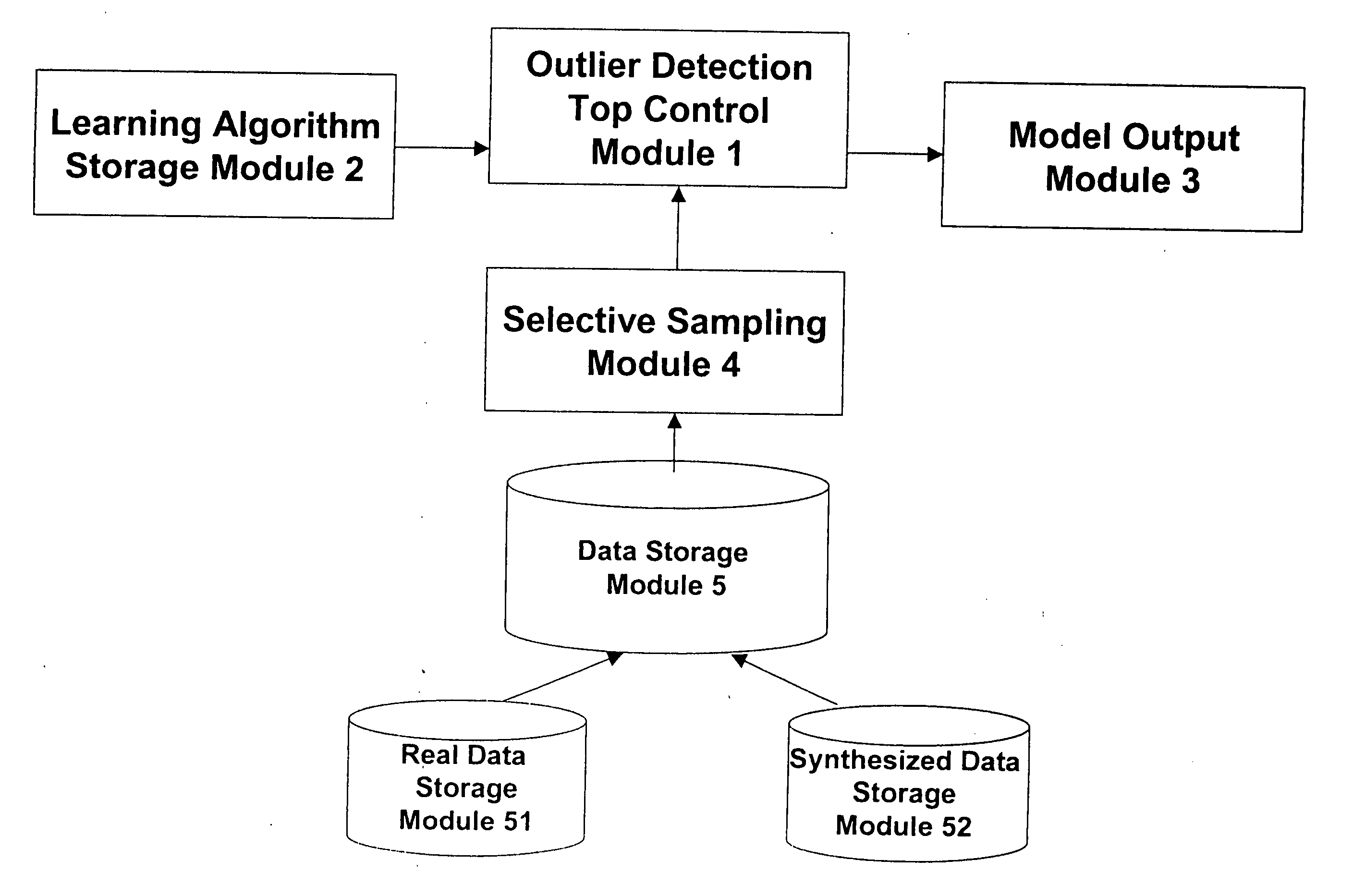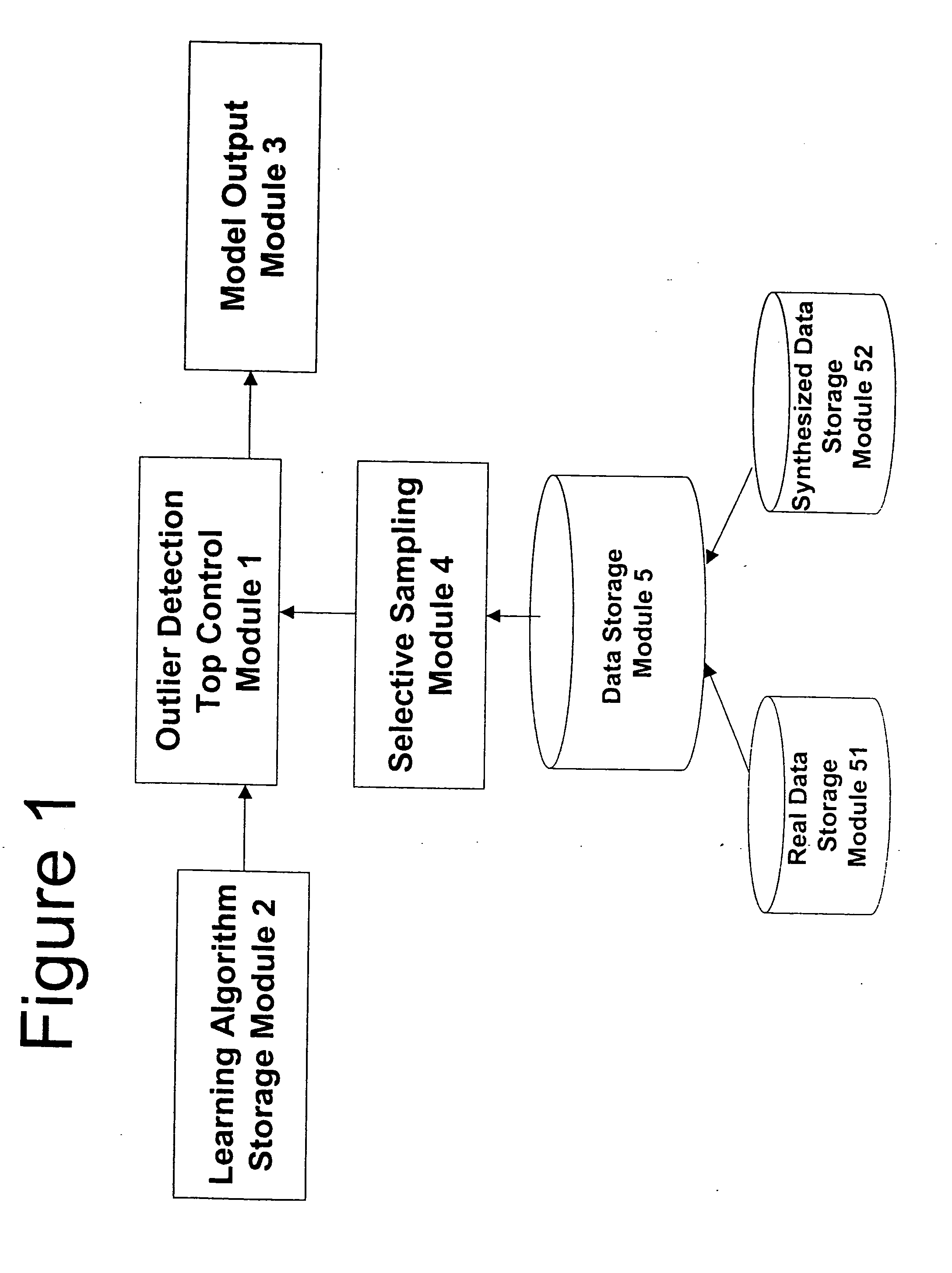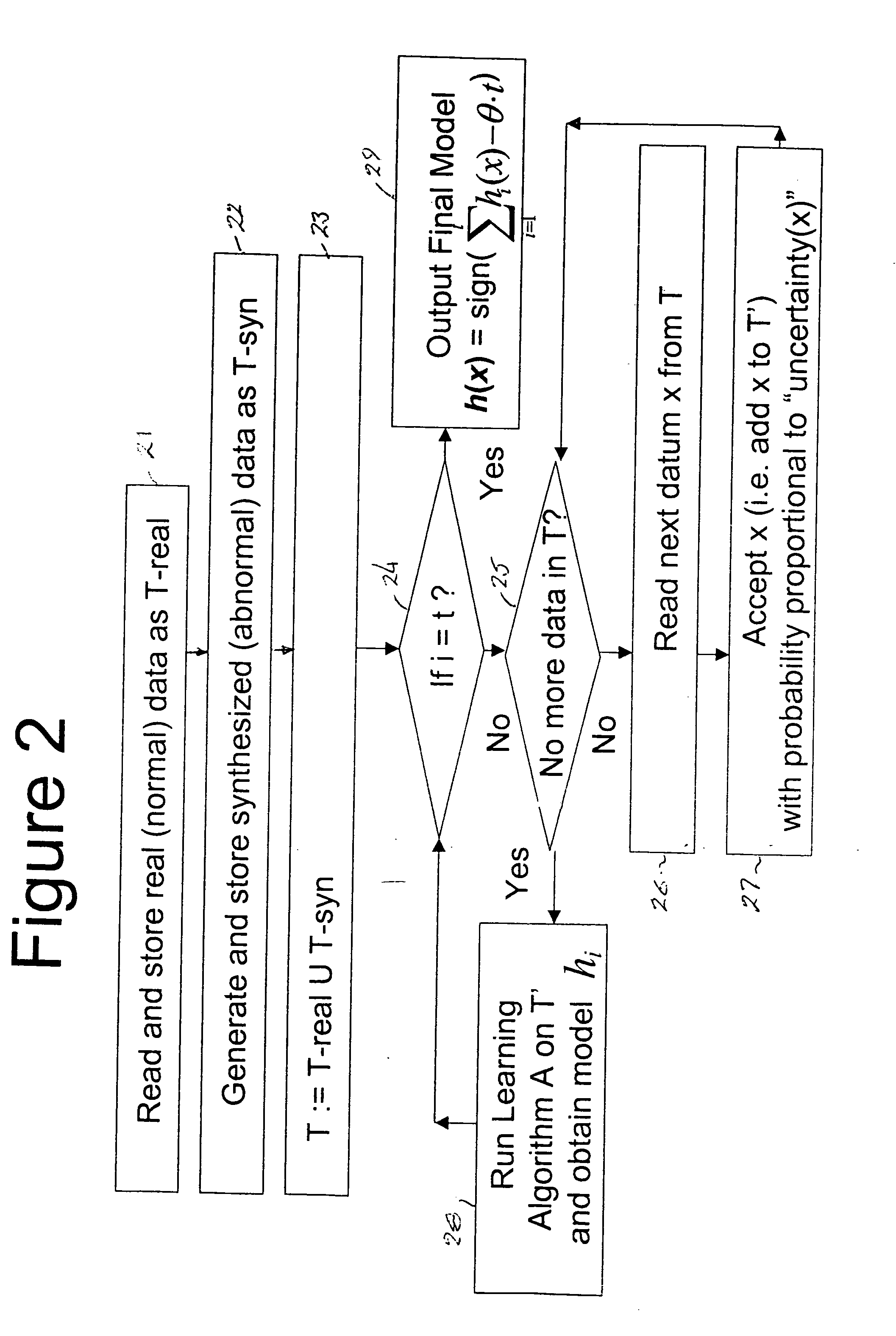Resource-light method and apparatus for outlier detection
a resource-light and outlier detection technology, applied in the field of machine learning and data mining, can solve the problems of giving away labels too easily and the likely uselessness of obtained classifiers, and achieve the effects of reducing computational requirements, reducing data size, and high accuracy prediction
- Summary
- Abstract
- Description
- Claims
- Application Information
AI Technical Summary
Benefits of technology
Problems solved by technology
Method used
Image
Examples
Embodiment Construction
[0017] Referring now to the drawings, and more particularly to FIG. 1, there is shown a data processing system illustrating the data flow of the implemented method according to the invention. The data processing system comprises a top control module 1, a learning algorithm storage module 2, a model output 3, a selective sampling module 4, and a data storage module 5. The data storage module 5 comprises a real data storage module 51 and a synthesized data storage module 52.
[0018] The top control module 1 controls the overall control flow, making use of various sub-components of the system. The learning algorithm storage module 2 stores a representation of an algorithm for classification learning. An arbitrary algorithm for classification can be used here, such as decision tree learning algorithms, naïve Bayes method, logistic regression method and neural network training algorithms. The model output module 3 stores the models obtained as a result of applying the learning algorithm s...
PUM
 Login to View More
Login to View More Abstract
Description
Claims
Application Information
 Login to View More
Login to View More - R&D
- Intellectual Property
- Life Sciences
- Materials
- Tech Scout
- Unparalleled Data Quality
- Higher Quality Content
- 60% Fewer Hallucinations
Browse by: Latest US Patents, China's latest patents, Technical Efficacy Thesaurus, Application Domain, Technology Topic, Popular Technical Reports.
© 2025 PatSnap. All rights reserved.Legal|Privacy policy|Modern Slavery Act Transparency Statement|Sitemap|About US| Contact US: help@patsnap.com



